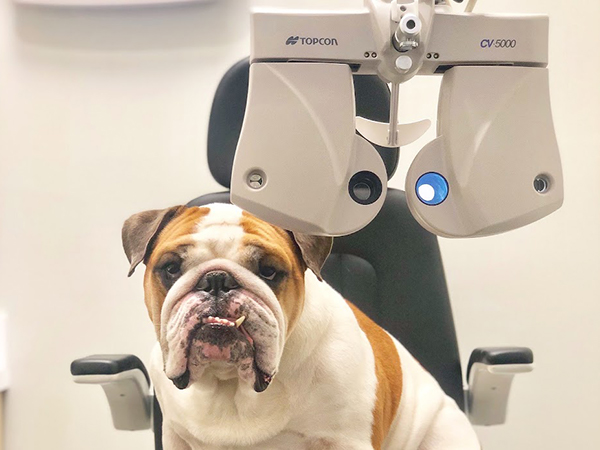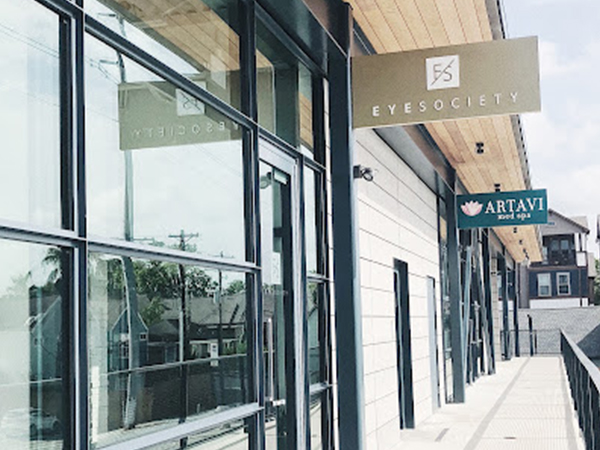Understanding the Different Tests in a Medical Eye Exam
Blog:Understanding the Different Tests in a Medical Eye Exam

Many people only think about eye exams when they notice a change in their vision, but a medical eye exam is about much more than just updating your prescription. It plays a critical role in detecting and managing serious eye conditions that could impact your long-term vision and overall health. At Eye Society, we use advanced diagnostic tools to catch issues early, often before symptoms appear. If you live in Houston and want to take a proactive approach to your vision care, understanding the different tests in a medical eye exam can help you know what to expect and why they matter.
What is the Difference Between a Comprehensive Exam and a Medical Exam?
A comprehensive eye exam and a medical eye exam may seem similar, but they serve different purposes. A comprehensive eye exam is a routine check-up that evaluates overall vision and eye health, including tests for refractive errors like nearsightedness, farsightedness, and astigmatism. It often includes a vision prescription update and an assessment of eye coordination and focusing ability.
In contrast, a medical eye exam is focused on diagnosing and managing eye diseases or conditions that require medical attention, such as glaucoma, diabetic retinopathy, macular degeneration, or infections.
Both are essential, but the type of exam you need depends on whether you're checking your prescription or addressing a medical issue affecting your eyes.
Diabetic Eye Exam
Houston is home to a large community of people managing diabetes, and if you’re one of them, your eyes need special attention. High blood sugar levels can damage the tiny blood vessels in your retina, leading to diabetic retinopathy—a leading cause of blindness.
During a diabetic eye exam, we use digital retinal imaging to check for early signs of retinal damage. This allows us to detect swelling, leaking blood vessels, or changes in your retina before they lead to vision loss. Even if you don’t have symptoms, annual diabetic eye exams are crucial for protecting your sight.
Glaucoma Screening
Glaucoma is one of the most common and most dangerous eye conditions because it often develops without noticeable symptoms. It gradually damages the optic nerve, which can lead to permanent vision loss if not detected early.
A glaucoma screening includes:
Tonometry – Measures the pressure inside your eye, as high pressure can be a risk factor for glaucoma.
Ophthalmoscopy – Examines the optic nerve for any signs of damage.
Visual Field Test – Detects any blind spots or peripheral vision loss.
Since glaucoma tends to run in families, we encourage anyone over 40, or those with a family history of the disease, to schedule regular screenings.
Digital Retinal Imaging
At Eye Society, we use state-of-the-art digital retinal imaging to get a highly detailed view of your retina, optic nerve, and blood vessels—all without dilating your pupils in most cases. This technology helps us monitor changes over time, making it easier to detect early signs of conditions like macular degeneration, retinal tears, and optic nerve diseases.
Unlike traditional methods, retinal imaging provides a permanent, high-resolution record of your eye health, allowing us to track even the smallest changes from year to year.
Prioritizing Your Eye Health in Houston
Your eyes are one of your most valuable assets, and regular medical eye exams are essential for preserving your vision and catching potential issues early. Whether you’re managing a condition like diabetes, concerned about glaucoma, or simply staying proactive with your eye health, the right tests can make all the difference. At Eye Society, we provide thorough, personalized care using advanced technology to ensure you receive the best possible diagnosis and treatment.
If it’s been a while since your last medical eye exam, contact Eye Society to book your appointment and take the first step toward protecting your vision. Visit our office in Houston, Texas, or call (832) 582-7216 today.



